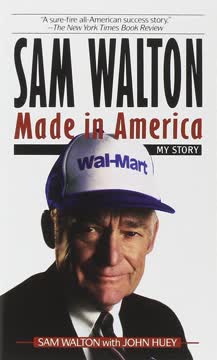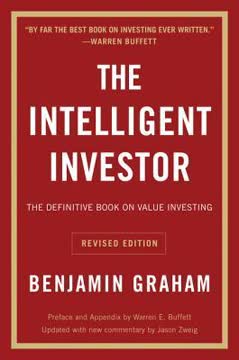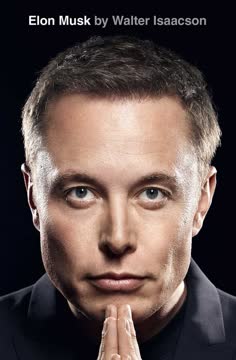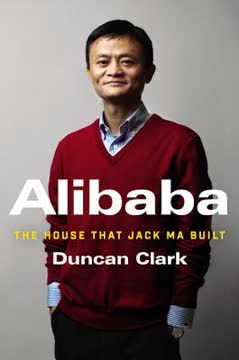Key Takeaways
Amazon's Relentless Pursuit of the "Everything Store" Vision
"If there's going to be a 'Wal-Mart of the Web,' it is going to be Walmart.com. Our goal is to be the biggest and most visited retail website."
From books to everything: Amazon started as an online bookstore but rapidly expanded into diverse product categories. This expansion included music, DVDs, electronics, toys, and eventually industrial supplies, high-end apparel, art, and wine. The company's growth strategy involved:
- Leveraging its e-commerce platform to enter new markets
- Developing a robust third-party marketplace
- Creating innovative services like Amazon Web Services (AWS)
Overcoming challenges: Amazon faced numerous obstacles in its quest to become the everything store, including:
- Skepticism from traditional retailers and publishers
- Logistical complexities of managing vast inventory
- Fierce competition from established brick-and-mortar stores
Despite these challenges, Amazon's unwavering commitment to its vision and its ability to adapt to changing market conditions allowed it to emerge as a dominant force in global e-commerce.
Jeff Bezos: The Visionary Leader with Unyielding Determination
"I want you to understand that from this day forward, you are not bound by the old rules."
Relentless innovation: Bezos consistently pushed Amazon to innovate and disrupt industries. His leadership style was characterized by:
- Long-term thinking and willingness to experiment
- High expectations and demanding work ethic
- Emphasis on data-driven decision making
Key decisions: Bezos made several critical decisions that shaped Amazon's trajectory:
- Investing heavily in fulfillment centers and logistics
- Launching Amazon Prime to build customer loyalty
- Developing the Kindle to dominate the e-book market
- Creating AWS to capitalize on cloud computing
Bezos's ability to anticipate market trends and his willingness to take calculated risks were instrumental in Amazon's success. His leadership philosophy, often described as "customer obsession," became deeply ingrained in Amazon's corporate culture.
Amazon's Culture: Customer Obsession and Long-Term Thinking
"We see our customers as invited guests to a party, and we are the hosts. It's our job every day to make every important aspect of the customer experience a little bit better."
Core values: Amazon's culture is built on several key principles:
- Customer obsession
- Long-term thinking
- Innovation
- Frugality
- Bias for action
Operational impact: These values influenced Amazon's operations in several ways:
- Continuous improvement of the customer experience
- Willingness to sacrifice short-term profits for long-term growth
- Emphasis on hiring and retaining top talent
- Promotion of a frugal, startup-like mentality even as the company grew
Amazon's culture, while often demanding and intense, fostered an environment of constant innovation and customer-focused improvement. This culture was instrumental in driving the company's rapid growth and market dominance.
Innovative Strategies: Prime, AWS, and Kindle Revolutionize Industries
"There are two kinds of retailers: there are those folks who work to figure how to charge more, and there are companies that work to figure how to charge less, and we are going to be the second, full-stop."
Game-changing innovations: Amazon introduced several revolutionary products and services:
-
Amazon Prime:
- Free two-day shipping for an annual fee
- Built customer loyalty and increased purchase frequency
- Later expanded to include streaming video and other perks
-
Amazon Web Services (AWS):
- Pioneered cloud computing services
- Became a major revenue source for Amazon
- Enabled startups and large corporations to scale rapidly
-
Kindle:
- Transformed the book industry
- Established Amazon as a leader in e-books
- Led to conflicts with traditional publishers
These innovations not only disrupted existing industries but also created new revenue streams for Amazon, solidifying its position as a technology leader and not just an e-commerce company.
Competitive Tactics: Aggressive Pricing and Strategic Acquisitions
"Your margin is my opportunity."
Pricing strategy: Amazon's approach to pricing was highly aggressive and data-driven:
- Willingness to operate at low margins to gain market share
- Use of sophisticated algorithms to adjust prices in real-time
- Leveraging scale to negotiate better terms with suppliers
Key acquisitions: Amazon made strategic acquisitions to expand its capabilities:
- Zappos (online shoe retailer)
- Quidsi (parent company of Diapers.com)
- Kiva Systems (robotics company for warehouse automation)
These tactics often put pressure on competitors and suppliers, leading to both admiration and criticism of Amazon's business practices. The company's ability to operate at low margins and its willingness to enter new markets through acquisitions contributed significantly to its rapid growth.
Challenges and Controversies: Tax Issues, Publisher Conflicts, and Public Perception
"Amazon is not happening to the book business. The future is happening to the book business."
Major challenges: Amazon faced several significant controversies:
-
Tax issues:
- Avoided collecting sales tax in many states
- Faced criticism for exploiting tax loopholes
-
Conflicts with publishers:
- Disputes over e-book pricing
- Launch of Amazon Publishing raised concerns in the industry
-
Labor practices:
- Criticism of working conditions in fulfillment centers
- High-pressure work environment for corporate employees
Public perception: These issues contributed to a complex public image of Amazon:
- Admired for innovation and customer service
- Criticized for aggressive business practices and market dominance
- Scrutinized for impact on traditional retail and publishing industries
Amazon's responses to these challenges, often characterized by a combination of pragmatism and principle, shaped its evolving relationship with customers, partners, and regulators.
The Future of Amazon: Balancing Growth, Innovation, and Corporate Responsibility
"I believe the four 'unloved' companies are inventive as a matter of substance. But they are not perceived as inventors and pioneers. It is not enough to be inventive—that pioneering spirit must also come across and be perceivable by the customer base."
Future directions: Amazon continues to explore new frontiers:
- Expansion into physical retail (Amazon Go, Whole Foods acquisition)
- Advancements in artificial intelligence and voice technology (Alexa)
- Investments in healthcare and pharmaceuticals
- Exploration of drone delivery and other logistics innovations
Balancing act: As Amazon grows, it faces the challenge of maintaining its innovative edge while addressing concerns about its market power and societal impact. Key considerations include:
- Navigating increased regulatory scrutiny
- Addressing labor and environmental concerns
- Maintaining customer trust and brand reputation
- Continuing to innovate in mature markets
The company's ability to balance these competing demands while staying true to its core principles of customer obsession and long-term thinking will likely determine its future success and legacy in the business world.
Last updated:
FAQ
What's The Everything Store about?
- Amazon's Evolution: The book chronicles Amazon's journey from a small online bookstore to a global e-commerce giant, highlighting Jeff Bezos's vision and leadership.
- Bezos's Background: It explores Bezos's early life and the influences that shaped his business philosophy, emphasizing his entrepreneurial spirit.
- Key Strategies: The narrative focuses on Amazon's innovative strategies, such as customer obsession, frugality, and efficiency.
Why should I read The Everything Store?
- Business Icon Insight: Gain an in-depth understanding of Jeff Bezos, one of the most influential figures in modern business, and his unique leadership approach.
- Innovation Lessons: Learn valuable lessons about innovation, risk-taking, and customer focus in building a successful company.
- E-commerce Evolution: Understand how Amazon transformed the retail landscape and the implications for the future of e-commerce.
What are the key takeaways of The Everything Store?
- Customer Obsession: Bezos emphasizes that being genuinely customer-centric is crucial to Amazon's success.
- Long-term Thinking: The book illustrates Bezos's commitment to long-term goals over short-term profits, focusing on sustainable growth.
- Embrace Failure: Bezos's philosophy includes learning from failures, as some investments will pay off while others will not.
What are the best quotes from The Everything Store and what do they mean?
- "In the end, we are our choices.": Reflects Bezos's belief in decision-making and personal responsibility in shaping one's destiny.
- "There is so much stuff that has yet to be invented.": Captures Bezos's forward-thinking mindset and ongoing innovation process.
- "Your margin is my opportunity.": Highlights Amazon's strategy of undercutting competitors' prices to gain market share.
How did Jeff Bezos's early life influence his business approach in The Everything Store?
- Supportive Family: Bezos grew up in a nurturing environment that encouraged his intellectual curiosity and competitive spirit.
- Early Ventures: Childhood experiences, like creating a summer school, instilled innovation and leadership skills.
- Space Fascination: His interest in space exploration reflects his broader vision of pushing boundaries in business.
What management style does Bezos employ in The Everything Store?
- Decentralized Decision-Making: Bezos empowers small teams, using the "two-pizza team" concept for efficiency.
- High Standards: He insists on a high bar for talent, ensuring each hire raises the bar for the next.
- Direct Communication: Known for blunt feedback, Bezos ensures employees remain focused and accountable.
What challenges did Amazon face during its growth, as described in The Everything Store?
- Dot-Com Bubble: Amazon struggled during the dot-com crash, facing investor skepticism and a plummeting stock price.
- Operational Chaos: Rapid expansion led to inefficiencies in logistics, requiring constant adaptation.
- Leadership Turmoil: High executive turnover occurred during the transition from aggressive growth to profitability focus.
How did Amazon's culture evolve over time in The Everything Store?
- Frugality Emphasis: Bezos instilled a culture of frugality, expecting cost-effective solutions and waste avoidance.
- Customer-Centric Focus: The culture is deeply rooted in customer obsession, prioritizing satisfaction and innovation.
- Adaptation to Change: As Amazon grew, the culture embraced more structured processes and accountability.
What role did technology play in Amazon's success, according to The Everything Store?
- Innovative Algorithms: Advanced algorithms for personalization and inventory management enhanced operations.
- E-commerce Infrastructure: A robust platform enabled rapid scaling and seamless transaction handling.
- Data-Driven Decisions: Bezos emphasized data's importance in understanding customers individually.
How did Bezos handle competition in The Everything Store?
- Aggressive Pricing: Bezos used significant discounts to attract customers and gain market share.
- Focus on Innovation: Constantly improving the customer experience was key to staying ahead.
- Long-Term Vision: Bezos prioritized sustainable competitive advantage over short-term losses.
What impact did the Kindle have on the publishing industry, as described in The Everything Store?
- Disruption of Models: The Kindle changed book sales and consumption, affecting physical bookstores.
- Pricing Challenges: Amazon's e-book pricing created challenges for publishers, leading to legal battles.
- Direct Publishing: Kindle enabled self-publishing, allowing authors to bypass traditional routes.
What is the significance of the title The Everything Store?
- Comprehensive Selection Ambition: Reflects Bezos's vision of a platform offering an unparalleled range of products.
- Symbol of Innovation: Signifies Amazon's commitment to expanding offerings beyond books.
- Cultural Impact: Encapsulates Amazon's transformative effect on retail and consumer expectations.
Review Summary
Readers praise Stone's thorough research and engaging storytelling, offering insights into Amazon's business strategies and Bezos's leadership. Many find it a fascinating look at the company's rise and its impact on retail and technology. However, some critics, including Bezos's wife, dispute certain details. The book is generally viewed as balanced, highlighting both Amazon's innovations and its controversial practices, making it a valuable read for those interested in business and technology.
Similar Books










Download PDF
Download EPUB
.epub digital book format is ideal for reading ebooks on phones, tablets, and e-readers.





